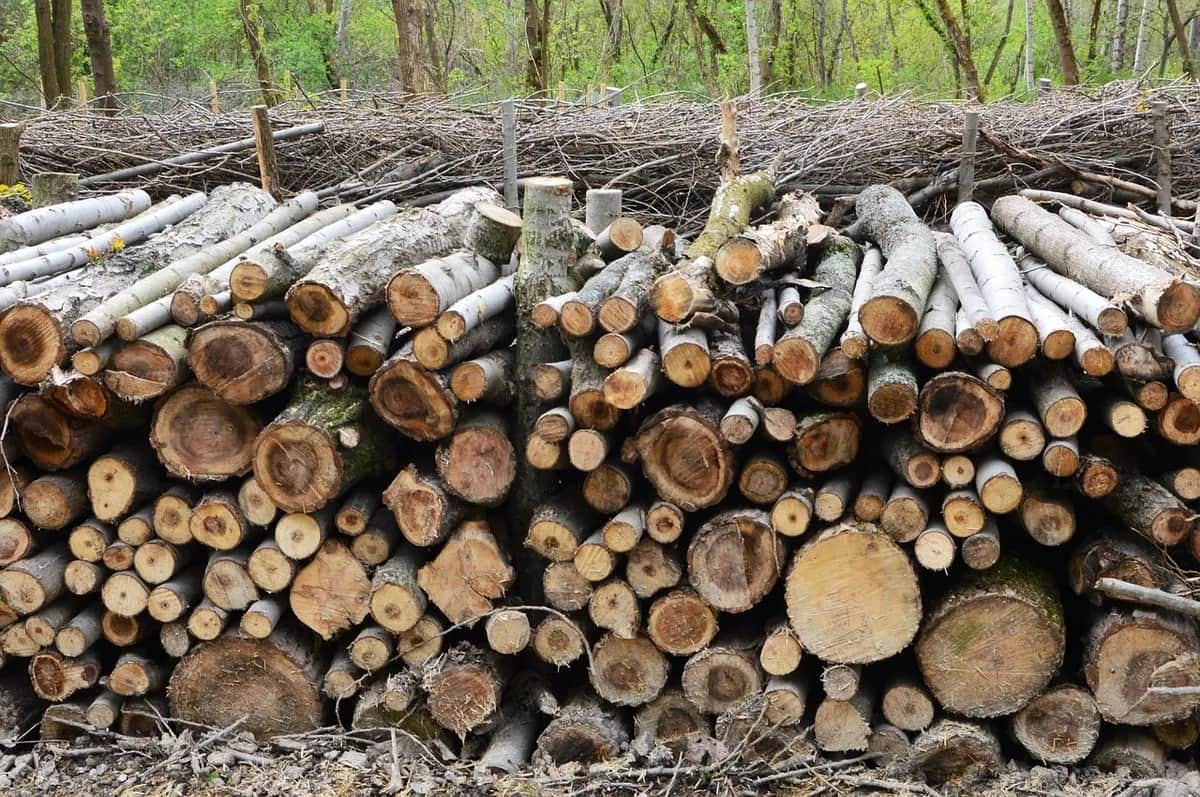Sourcing wood fuel from hedgerows, rural estates and farm woodlands
Save up to 80% on your fuel costs
4 minute read
Return to the article listA rural landowner’s estate or farm can yield a surprisingly large amount of wood fuel. In many cases this can be in sufficient quantities to more than sustain the heating demands of the buildings on the estate.
Fuel cost savings of up to 80% against oil are being enjoyed by a number of our clients who are self-supplying. For example, 198kw biomass boiler system would generate a fuel cost saving in excess of £12,000 a year against oil.
In addition to the obvious woodlands on these estates, hedgerows and small cluster of trees can also be managed and used for wood fuel. Managing these sources is also good for helping wildlife to thrive. With this in mind, we thought we would discuss this trend in further detail.

Woodland management
Typically, the wood fuel derived from hedgerows, estate or farm woodlands is available from largely under-managed sources. Woodlands forming as little as 0.25 hectares upwards can be viable for small scale wood fuel self-supply. Bringing them back into management is relatively straightforward. There are already a series of Forestry Commission initiatives and grants available to support the maintenance and development of these woodlands for wood fuel.
In promoting the health and growth of trees and hedgerows, we add to our carbon capture capabilities. Bringing woodland and hedgerows back into management is also good for wildlife. Hedgerows also form natural Wildlife Corridors and can also help combat wildlife declines and create an environment for wildlife to actually thrive.
Wood fuel is just one crop from woodland management. In the early stages of managing woodland, it can be a vital and valuable source of early income through felling and clearing to promote new growth and planting. This can increase the diversity and resilience of the woodland, as well as its future financial value.

Hedgerow management
Hedgerows contain a large volume of useable wood fuel. Managing and harvesting hedgerows can make a dramatic impact on wood fuel availability.
Using a flail or disc cutter to trim hedges from a tractor produces practically no useable wood fuel. Equally, traditional hedge laying, which does benefit wildlife and healthy management, yields a comparatively small amount of wood fuel. Using this method, the most useable material is re-inserted into the hedge through layering. This kind of traditional approach is most useful for log production and is referred to as ‘lay and log’ hedging.
An alternative approach is the ‘coppice and chip’ method. Hedgerow planted trees and shrubs are coppiced on a 10 to 20-year rotation cycle. This provides an adequate balance between long term management, wildlife support, overall health and structure. Cutting the whole tree or bush back after leaves have fallen, or cutting back to the stump of more fully developed trees can produce a significant amount of wood fuel.
The brash and arisings can either be dried and seasoned in the field, or chipped wet (green) and then stored well-ventilated on a solid floor to prevent soil and stone intrusion and to dry through a fermentation process. This also necessitates keeping the bark on the material when it is chipped, as it contributes to the fermentation process.
Wood chips can be dried down to the 30% maximum moisture content for use in our biomass boilers in just tree to four months using this process. Barns with air dryers and underfloor ducting for heat can be ideal for this drying process. In fact, those using biomass fuel for this process can be paid to dry the fuel that they then burn in their biomass boiler to generate RHI payments.
A key decision factor for the landowner in considering the utilisation of hedgerows is the economics, practicality and aesthetic impact of converting some hedgerow over to ‘coppice and chip’ management.
Making an initial assessment
Making an initial assessment of the full wood fuel potential from a woodland or hedgerow, managed or not, requires expert assistance from a forestry professional. However, a woodland or landowner can make an initial, early estimate themselves.
This can identify the likelihood and options for wood fuel self-supply, or at least the contribution it can make. One of the EU-funded projects, which promotes member state regions collaborating and sharing skills and knowledge transfer is the Cordiale Project. This project has linked the South West region of the UK with Brittany in France. One of the project strands was realising the potential of small woodlands and hedgerows, which are more commonplace in rural France.
From the project website, as well as an introduction to the principles, there are a series of downloads.
A Cordiale calculation toolkit enables anyone to make a simple assessment of the potential volume of wood fuel that can be gained from various types of woodland and hedgerows in various conditions, from managed to unmanaged. You can also download the tool for woodland and hedgerow initial assessment.
There are a series of more sophisticated tools that can give a more in-depth analysis, but these can require some skill and expertise to use effectively. If the initial assessment reveals this process to be valuable, we would recommend seeking external expertise and assistance. An initial consultation with your regional Forestry Commission office will give you further guidance and also help you identify likely grant funding.
It is important to be aware that the actual yield of a hedge depends greatly on the species of tree and bush that are planted, the climate, location and cutting cycle. For long term sustainability, it is recommended that no more than 50% of farmland hedges are coppiced, and no more than 5% of the coppiced hedge is cut every year.

Further advice and support
Natural England is a further source of advice and support for hedgerows.
There are also charitable trusts that promote hedges and best practice.
Hedgelink promotes partnerships in hedges, bringing groups and people together to promote hedgerows.
In 2014, on a more local level, Devon Hedges (the ‘Devon style’ is a classical style of hedge) published a new guide, Woodfuel from Hedges, the first for Britain, on how to manage West Country hedges for fuel, including harvesting techniques and likely biomass yields. Random pie
You may not have fully considered the amount of wood fuel available on your farm or estate for self supply or realised that an up to 80% fuel cost saving is achievable, so we hope this article has given you a good overview. There is a lot of noise in the media about wood fuel supply, but the reality is that there is far more than you think available, right under your nose!